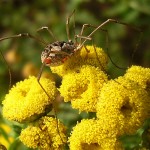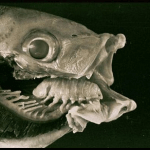Muses: Parasite of the Day
If you’ve read other blog posts here or followed us on Twitter, you’ve likely noticed that we kind of like parasites. A lot. And whether or not you can muster up the same fascination, it’s kind of hard to argue against their importance; roughly 40% of species on earth are parasitic, and as many as 75% of relationships in all food webs involve a parasitic interaction of some kind.
Read More »Muses: Parasite of the Day

